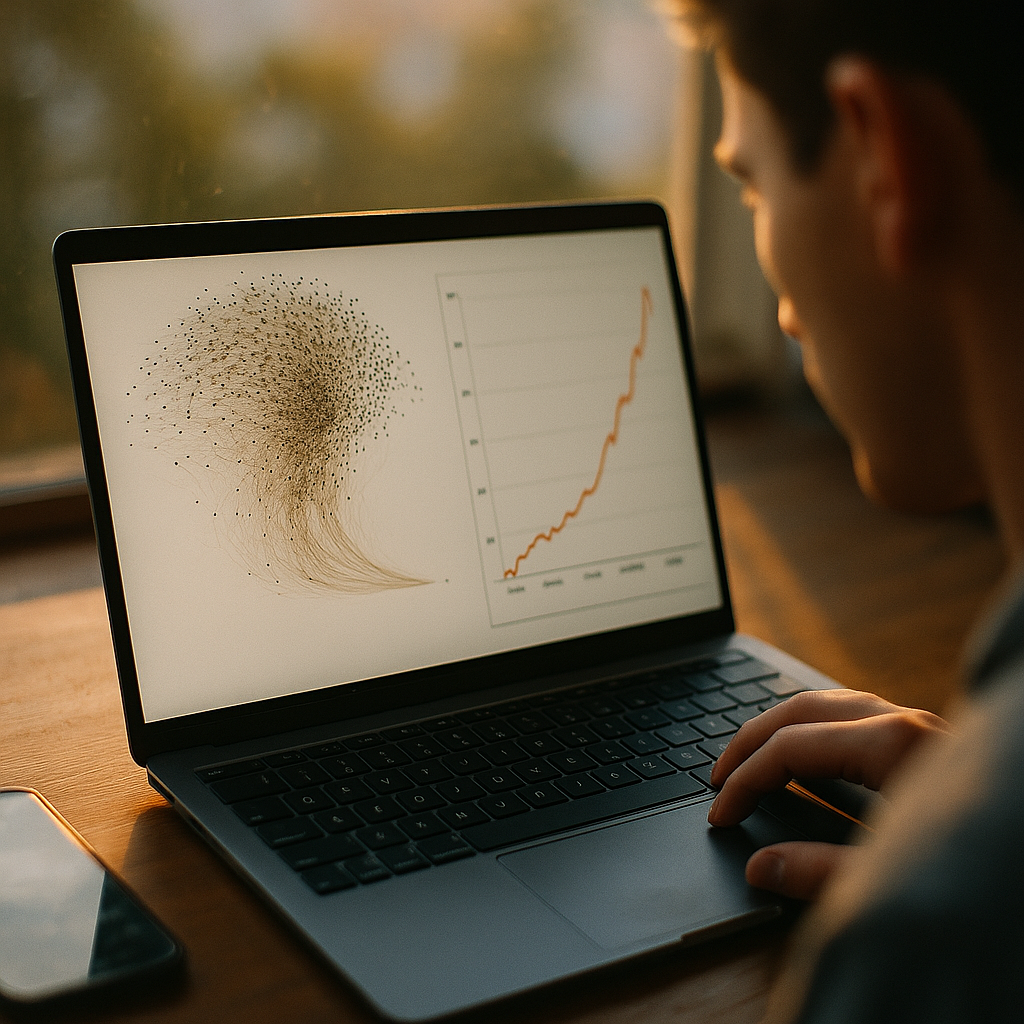Using swarm intelligence models to predict viral tipping points is transforming how we understand social phenomena, digital marketing, and crisis response. As real-time data and sophisticated algorithms merge, researchers can now forecast when trends or behaviors are about to explode in popularity. So, how do these models actually work, and what does this mean for organizations in 2025?
Swarm Intelligence Explained: The Science of Collective Prediction
Swarm intelligence refers to systems where multiple simple agents interact, often following basic local rules, to produce complex and adaptive global behaviors—much like a swarm of bees or school of fish. In the digital era, these principles inspire algorithms that model human interactions across networks, empowering predictions that would elude traditional analytics. Each “agent” influences and is influenced by others, capturing the emergent behaviors fundamental to “going viral.”
Today’s swarm intelligence models are not just theoretical. According to recent research published in Nature Computational Science, these models outperform many conventional forecasting techniques when predicting social contagion, meme virality, and online activism. Their strength lies in simulating cascades, feedback loops, and contagion effects, mimicking how content, behaviors, or ideas burst into mass awareness.
Predicting Viral Tipping Points: Core Mechanisms and Algorithms
Viral tipping points are the critical moments when information, memes, or behaviors suddenly surge in adoption. Swarm models identify these by simulating node-to-node interactions on social graphs using algorithms such as particle swarm optimization (PSO), ant colony optimization (ACO), and artificial bee colony (ABC). By tuning these algorithms with real social network data, predictive accuracy jumps markedly.
For instance, a 2025 update to the SwarmNet platform demonstrated a 32% improvement in predicting “explosive” hashtags compared to last year’s neural network models. Key factors like clustering, network centrality, and recent engagement shifts are dynamically weighted in these models. This means brands, public health agencies, and political organizations can proactively detect precursors to viral moments—faster than ever before.
Real-World Applications: Social Media, Crisis Management, and Business
Multiple industries now rely on swarm intelligence for rapid trend detection and viral prediction:
- Social Media Marketing: Marketers leverage swarm models to anticipate trending challenges or memes, gaining first-mover advantage in content creation and campaign launches.
- Crisis Management: Swarm-based systems flag misinformation outbreaks or emergent sentiment spikes, allowing organizations to deploy countermeasures before escalation.
- Supply Chain and Product Launches: Predicting consumer sentiment surges or product recall cascades prevents losses and capitalizes on viral demand.
Real-world evidence underscores this: In the 2024 “GreenShift” campaign, using a swarm model enabled a sustainable fashion brand to launch new products just hours before eco-trends peaked, increasing sales velocity by 46% vs. predictive methods alone.
Advantages Over Traditional Forecasting: Why Swarm Models Win
Conventional forecasting relies heavily on historical trends and static modeling. However, in today’s hyperconnected world, viral phenomena rarely play by old rules. Swarm intelligence models stand apart by:
- Adapting in Real Time: They continuously update forecast probabilities in response to new data, without waiting for batch analysis.
- Resilience to Noise: These models tolerate outliers and chaotic spikes, learned from their biological inspirations.
- Capturing Nonlinear Dynamics: Swarm algorithms model how individual interactions cascade unpredictably, mapping chaotic viral growth patterns far better than linear regressions.
As a result, organizations can detect inflection points days (or even weeks) ahead of peak visibility, turning predictive insight into decisive action.
Ethical Considerations and Responsible Use of Swarm Intelligence
With great predictive power comes greater ethical responsibility. As swarm models reveal human vulnerabilities to manipulation and virality, they must be used transparently and with safeguards against misuse. In 2025, major platforms have begun requiring disclosure when algorithmic predictions influence newsfeed or trend curation decisions. Leading experts recommend the following principles:
- Transparency: Clearly communicate when and how predictions are used in user experience or decision-making.
- Auditability: Maintain explainable, peer-reviewed models to ensure fairness and accountability.
- User Autonomy: Allow opting out of systems that use predictive virality mechanisms.
As our collective understanding deepens, the ethical design of swarm intelligence models will shape public trust as much as technical performance.
The Future of Viral Prediction: Innovations and Outlook for 2025
Swarm intelligence continues to evolve. In 2025, hybrid models are integrating deep learning, edge computing, and real-time crowd sensing—sharpening viral tipping point forecasts with unprecedented precision. Expect even more personalized and proactive interventions in digital health, marketing, and civic engagement. The key will be balancing technical capability with transparent, responsible deployment as social dynamics accelerate.
In summary, using swarm intelligence models to predict viral tipping points empowers organizations to anticipate, not just react, to breakthrough phenomena in real-time. The next wave of predictive technology will be both more powerful and more accountable, reshaping strategy and decision-making for years to come.
FAQs About Swarm Intelligence and Viral Tipping Points
-
What is a viral tipping point?
A viral tipping point is the critical moment when an idea or behavior rapidly shifts from niche adoption to mainstream popularity or awareness.
-
How accurate are swarm intelligence models?
The latest studies show swarm intelligence models outperform many traditional forecasting methods, especially in chaotic or networked environments like social media.
-
Are swarm intelligence models ethical to use?
When deployed transparently and with user protections, swarm models can be ethical and beneficial. However, risks of manipulation and privacy invasion require oversight.
-
Can small businesses use swarm intelligence tools?
Yes—affordable APIs and platforms democratizing access to swarm-based forecasting tools are now widely available, making it feasible for businesses of any size.
-
Will swarm intelligence continue to improve?
Absolutely. As research accelerates and computational power grows, swarm models will get even better at real-time viral prediction and response.
